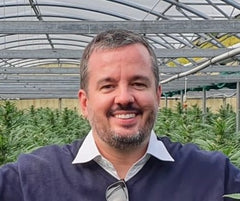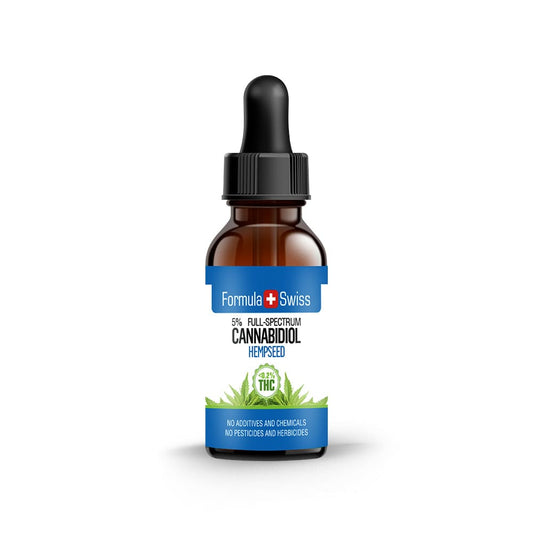In my recent years working within the CBD sector and at Formula Swiss, I have dedicated much of my focus to the study of cannabinoids and their connection to the body’s natural processes. Two of the most notable components within this biological framework are 2-AG and anandamide, both naturally occurring endocannabinoids produced by the human body.
These compounds have been explored for their potential involvement in supporting the body’s own regulatory functions. Through continuous research and staying informed about scientific progress, I have seen how a deeper understanding of the endocannabinoid system sheds light on the ways the body works to maintain its internal harmony.
Looking into the distinct roles of 2-AG and anandamide offers valuable perspectives on how the body’s internal systems operate, highlighting the complexity of these interactions. I hope that learning more about 2-AG and anandamide will provide useful insights, helping to develop a greater appreciation for the endocannabinoid system’s contribution.
With a foundation of scientific research and practical experience, we can gain a better understanding of how these compounds engage with the body’s natural functions.
Prefer watching over reading? This video covers the key points from the article:
Key Takeaways
- The endocannabinoid system was discovered in 1992 by Dr Lumir Hanus and Dr William Devane.
- CB1 receptors are primarily located in the brain, spinal cord and central nervous system, while CB2 receptors are found mainly in immune tissues.
- 2-AG and anandamide are endogenous lipids that interact with cannabinoid receptors in the body.
- The discovery of endogenous cannabinoids helped explain the natural function of cannabinoid receptors in humans.
- Both 2-AG and anandamide are synthesized on demand rather than stored in the body.
This article is provided for informational purposes only and does not relate to any of the products available in our webshop. For more information, please see our full disclaimer.
The Role of Endocannabinoids in the ECS
I often consider how the discovery of the cannabis plant contributed to identifying and naming the endocannabinoid system (ECS). Compounds found in the plant share notable similarities with the body’s endocannabinoids. Research continues to investigate how the ECS may be associated with various natural processes.

Role of 2-Arachidonoylglycerol (2-AG)
One molecule that captures my attention is 2-arachidonoylglycerol, commonly referred to as 2-AG. A study from the Journal of Molecules found that it binds to both CB1 and CB2 receptors and acts as a receptor agonist, allowing it to send signals through the nervous system.
The Obesity Research & Clinical Practice journal has examined the presence of 2-AG in processes linked to appetite, blood pressure, and neural activity. 2-AG has also been identified in human breast milk, with studies examining its potential association with early physiological development.
Endocannabinoids and Cognitive Aging Research
The relationship between endocannabinoids and ageing remains a fascinating area to study. While there are still many unanswered questions, particularly around conditions that affect cognitive function, researchers continue to study how the ECS may influence normal ageing processes.

The intricate nature of the system indicates that endocannabinoids could play a role in influencing neural networks as time progresses, though additional studies are required to deepen understanding in this area.
View our collection of carefully crafted CBD oils
Communication Between Endocannabinoids and Glial Cells
Another point that stands out is the way endocannabinoids interact with glial cells. Unlike neurons, glial cells do not typically bind directly to CB1 receptors, which makes their communication mechanisms more complex.
A study by Bilkei-Gorzo et al. (2018) has shown that neurons may act as intermediaries, detecting disruptions and relaying information through CB1 receptors to influence glial cell responses. These findings offer valuable insights into how the ECS could be involved in maintaining a balanced internal environment within the nervous system.
| Study | Key Findings | Details | Conclusion |
|---|---|---|---|
| Bilkei-Gorzo et al. (2018) | Neurons influence glial cell responses through CB1 receptors. |
|
Neuronal CB1 receptor activity is crucial for regulating astrocyte behaviour and maintaining neural homeostasis. |
Glial Cells and 2-AG Endocannabinoids
In mice, glial cells appear to detect disruptions such as bacterial infections and can alter their functioning in response.
During these changes, the body increases its production of endocannabinoids. Neurons respond by activating nearby CB1 receptors and relaying signals to other nerve cells while influencing immune responses. They also use proteins to send status updates back to the glial cells, helping to regulate inflammatory activity.
One of the key endocannabinoids produced and released by neurons during this process is 2-arachidonoylglycerol (2-AG).
What happens when the brain slows down endocannabinoid production?
The natural decline in endocannabinoid production with ageing has been linked to changes in brain function. Reduced CB1 receptor stimulation may affect glial cell activity and disrupt communication between neurons, contributing to increased immune responses and nerve cell damage.
In Alzheimer's disease, advanced stages are associated with the loss of nerve cell populations.

Research by Bilkei-Gorzo (2012) highlights alterations in the endocannabinoid system during neurodegenerative conditions. Scientific interest has explored how phytocannabinoids such as THC and CBD interact with biological systems, including those involved in oxidative balance and inflammation.
What is THC (Tetrahydrocannabinol)?
Andandamide
I have found that anandamide, also known as arachidonylethanolamide, is one of the most studied endocannabinoids after 2-AG. It is derived from the unsaturated fatty acid arachidonic acid, which is found in significant amounts within the central nervous system.
Anandamide was first identified in 1992 by pharmacologist William Anthony Devane and analytical chemist Lumír Ondřej Hanuš. Its name is taken from the Sanskrit word "Ananda", meaning joy, delight, or bliss, a fitting reference to its role within the body.
Interaction with the Endocannabinoid System
From what I have observed, anandamide interacts with CB1 and CB2 receptors, similar to plant-derived cannabinoids. At higher concentrations, it can even inhibit the effects of compounds such as THC within the endocannabinoid system. Although both anandamide and THC are highly fat-soluble, their molecular structures are quite different.
Production and Stability
Anandamide is synthesized in tissues and cell membranes. In my review of the literature, I have noted two main pathways for its production: the combination of arachidonic acid with ethanolamine and the involvement of phosphodiesterase enzymes in tissue processes.
Despite its significance, anandamide’s strong fat solubility means it has a relatively short half-life within the body.
Save up to 30% off on premium CBD oils
Other Receptor Targets
Anandamide does not only interact with cannabinoid receptors. It also binds to other targets, including the TRPV1 receptor, sometimes referred to as the vanilloid receptor, according to a study by Zygmunt et al. (1999).
This receptor, present in sensory nerve cells throughout the central and peripheral nervous system, is associated with the detection of painful stimuli, heat, and sharp tastes.
Other endogenous ligands (endogenous ligands) in the endocannabinoid system are:
| Ligand | Full Name |
|---|---|
| NADA | N-arachidonoyldopamine |
| OAE | Virodhamin |
| AGE | 2-arachidonylglyceryl ether (noladine ether) |
| Pregnenolone | Pregnenolone |
| LPI | Lysophosphatidylinositol |
Anorexia and Cachexia
I have seen how serious illnesses can severely affect a patient's eating patterns. Anorexia (loss of appetite or an increased craving for food) and cachexia (extreme weight loss combined with weakness and anaemia) are non-specific symptoms often seen in cases of autoimmune diseases, serious infections, and tumours.

In some situations, individuals dependent on psychoactive substances may also experience these symptoms. When not addressed over time, these conditions can lead to serious physical complications, sometimes requiring artificial nutritional support for recovery.
Which Cannabinoids Produce a Psychoactive Effect?
Impact on Muscle Mass and Nutrient Deficiency
Cachexia is associated with notable reductions in muscle mass and general declines in physical strength. Many individuals living with the condition may report feelings of fatigue, diminished physical capacity, and reduced overall well-being. Symptoms such as nausea, anxiety, and low mood are often observed alongside these physical changes.
Based on observations from scientific research, disruptions in the body's energy balance have been linked to potential deficiencies in key nutrients such as calcium, vitamin D, and phosphate. These imbalances may contribute to broader complications affecting bone and dental health.
Cognitive function and immune response can also be affected, although individual experiences vary. Continued research suggests that improvements in overall immune health may be possible following appropriate management and recovery strategies.
Shop CBD oil with savings of up to 30% off
Role of the Endocannabinoid System
I have observed that the endocannabinoid system (ECS) is an area of interest in scientific studies related to hunger and physiological balance. One receptor, known as GPR55, has attracted attention for its involvement in regulating intracellular calcium levels in cells and neurons through cannabinoid interactions.
Researchers are investigating how this mechanism may relate to changes in the body's energy demands during illness. Anandamide, one of the body's endocannabinoids, has been studied for its interactions with CB1 receptors, with some research exploring possible associations with appetite signalling.
I have also seen studies suggesting a potential connection between the endocannabinoid system and energy metabolism, although further research is needed to clarify these findings.
The Endocannabinoid System (ECS)
Personal Perspective
Working within the CBD industry for several years, I have closely followed developments around the human endocannabinoid system, particularly the role of 2-AG and anandamide. It is well-established that these two endocannabinoids interact naturally with CB1 and CB2 receptors to support the body's internal balance.
In my experience, a growing understanding of 2-AG and anandamide among consumers and practitioners alike is reshaping conversations around cannabinoids. I find it encouraging to see more emphasis placed on the body's own cannabinoid production rather than focusing solely on external sources, as this reflects a more complete view of the endocannabinoid system’s role in human physiology.
Frequently Asked Questions
What are 2-AG and anandamide?
2-Arachidonoylglycerol (2-AG) and anandamide (arachidonoylethanolamide) are naturally occurring endocannabinoids in the human body. They are lipid-based neurotransmitters that bind to cannabinoid receptors.
How are 2-AG and anandamide synthesized in the body?
2-AG is mainly synthesized through the enzymatic cleavage of diacylglycerol by diacylglycerol lipase. Anandamide is primarily produced from N-arachidonoyl phosphatidylethanolamine (NAPE) through the action of specific phospholipase enzymes.
What are the main functions of 2-AG and anandamide?
2-AG and anandamide play a part in influencing a range of natural bodily functions, such as mood, appetite, and memory. These compounds serve as signalling agents within the endocannabinoid system.
How do 2-AG and anandamide interact with cannabinoid receptors?
Both 2-AG and anandamide bind to cannabinoid receptors, primarily CB1 and CB2 receptors. 2-AG is considered a full agonist at these receptors, while anandamide acts as a partial agonist.
Which endocannabinoid is more abundant in the brain?
2-AG is significantly more abundant in the brain compared to anandamide. It is present at concentrations up to 170 times higher than anandamide.
How are 2-AG and anandamide broken down?
2-AG is primarily degraded by the enzyme monoacylglycerol lipase (MAGL). Anandamide is mainly broken down by fatty acid amide hydrolase (FAAH).
Do 2-AG and anandamide have different physiological roles?
Yes, 2-AG has been studied for its involvement in immune and inflammatory processes, while anandamide has been explored in relation to mood and emotional regulation. Their differing interactions with cannabinoid receptors have been observed to contribute to variations in receptor activity.
Are 2-AG and anandamide found in foods?
Both 2-AG and anandamide are not typically present in foods, but certain food sources contain compounds that may influence their levels in the body. For example, chocolate contains compounds structurally similar to anandamide.
How are new cannabinoids being discovered and classified?







